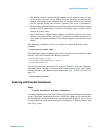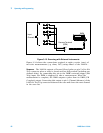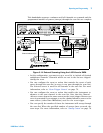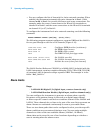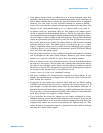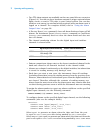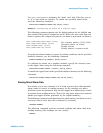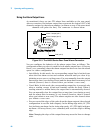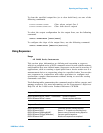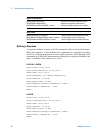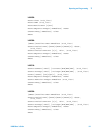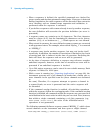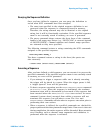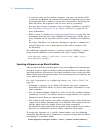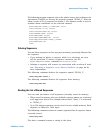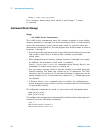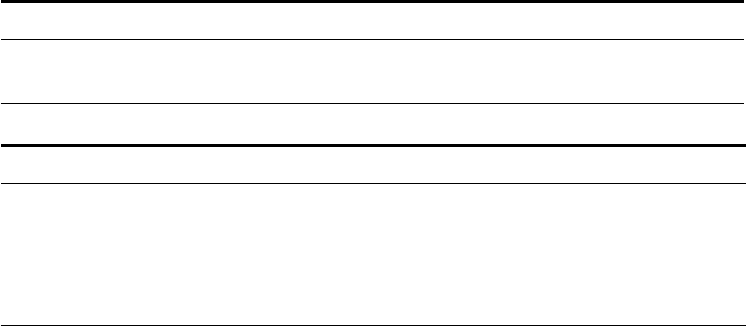
Operating and Programming 3
L4400 User’s Guide 89
To clear the specified output line (or to clear both lines), use one of the
following commands.
To select the output configuration for the output lines, use the following
command.
OUTPut:ALARm:MODE {LATCh|TRACk}
To configure the slope of the output lines, use the following command.
OUTPut:ALARm:SLOPe {NEGative|POSitive}
Using Sequences
Usage:
• All L4400 Series Instruments
This section gives information on defining and executing a sequence,
which is a compiled series of SCPI commands stored in non- volatile memory
and identified by a user- defined name. Sequences can be used in a variety of
applications, such as creating a signal path from a device-under- test to a
measurement device or sequencing relays in a specified order. You can also
uses sequences in conjunction with other operations to configure and
synchronize complex measurements without having to send the routing
commands each time.
The following tables summarizes the commands used to define, execute, and
manage sequences. For more information, see the Programmer’s Reference
Help file on the L4400 series Product Reference CD- ROM.
OUTPUT:ALARM2:CLEAR
OUTPUT:ALARM:CLEAR:ALL
Clear alarm output line 2
Clear both alarm outputs
Sequence Definition
ROUTe:SEQuence:DEFine <name>, "<commands>"
ROUTe:SEQuence:DEFine? <name>
Defines a sequence.
Returns sequence definition.
Sequence Execution
ROUTe:SEQuence:ABORT
ROUTe:SEQuence:BUSY?
ROUTe:SEQuence:RUNNing:NAME?
ROUTe:SEQuence:TRIGger[:IMMediate]
ROUTe:SEQuence:WAIT
Terminates currently-running sequence.
Returns “1” if sequence is executing (busy).
Returns name of currently-running sequence.
Executes specified sequence.
Blocks until sequence has completed.



